If you are looking forward to owning an attractive, cute looking and unique succulent, you should start growing a Kalanchoe Rhombopilosa.
They look stunning and tend to look like a silvery butterfly. Kalanchoe Rhombopilosa is an herbaceous perennial succulent which belongs to the Crassulaceae family. They could fit in even in a small space since they do not grow big.
Once you grow them in pots, it will make the house look prettier. In fact, they would look like jewels in the pots.
Common name of these plants is Pies from Heaven. Kalanchoe Rhombopilosa are native plants in Madagascar. Their natural habitat would be the Rocky Mountains and the dry soil there.
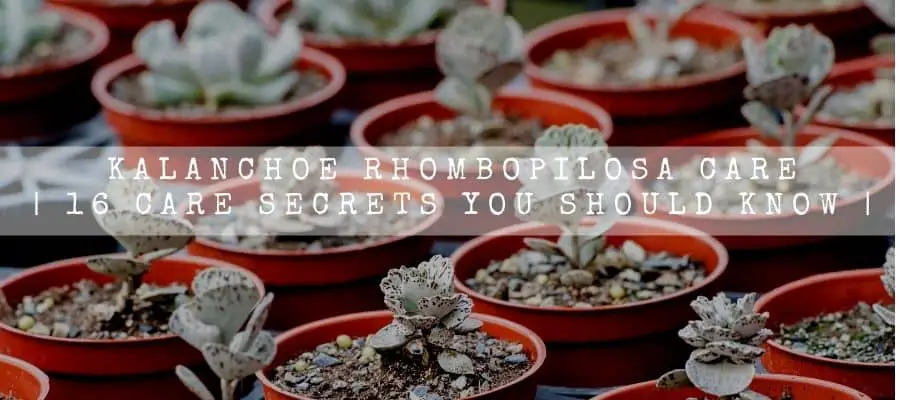
How do I identify Kalanchoe Rhombopilosa?
You could identify the Kalanchoe Rhombopilosa plant by its beautiful leaves and stem.
Kalanchoe Rhombopilosa leaves are fleshy to the touch, silver green in color and have brown markings on them. That create marble like pattern on their leaves. The important thing is this kind of patterns are rare in succulent leaves.
Their stem would be slender, woody, and hairy. In addition to that Kalanchoe Rhombopilosa plants would be about 12 inches (30cm) tall.
Kalanchoe Rhombopilosa plants would usually produce green, yellow, or pink colored flowers. They are small and you could spot some purple lines on the flowers as well.
You could identify the Kalanchoe Rhombopilosa from this feature during spring since that is their flowering season.
Size of the plant
Kalanchoe Rhombopilosa‘s maximum height would be about 12 inches (30cm).
One look care guide
| Botanical Name | Kalanchoe Rhombopilosa |
| Common Name | Pies from Heaven |
| Plant Type | Succulent |
| Mature Size | 12 inches (30cm). |
| Sun Exposure | Full Sunlight to partial sunlight |
| Soil Type | Well-draining |
| Soil pH | 6.0-6.5 |
| Bloom Time | Spring |
| Flower Color | Yellow |
| Hardiness Zones | USDA hardiness zones 10a-11b. |
| Native Area | Madagascar |
| Toxicity | Toxic |
| Average price | $ 15 |
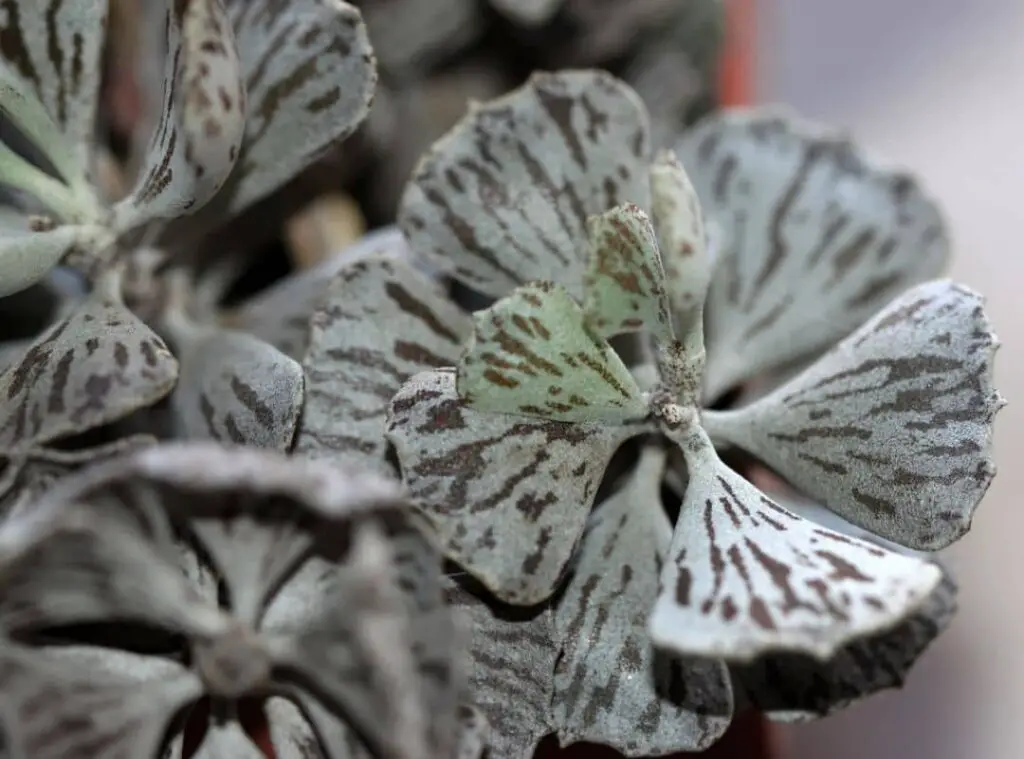
How do you take care of Kalanchoe Rhombopilosa?
Let us find out as to how you need to care for the Kalanchoe Rhombopilosa plants properly.
Light Requirement
When it comes to the light requirement of the Kalanchoe Rhombopilosa plants, they would enjoy growing under bright sunlight.
As such best is to grow them under full bright sunlight to partial sunlight when you are growing them outdoors.
If you live in any area where there are extremely hot and sunny weather conditions, I recommend planting them in partial shade.
On the other hand, when you grow these plants indoors, best is to place them near a bright sunny window which will allow the plants to gain ample sunlight.
Having said that, refrain from placing them near bright sunny windows during summer. Unless it would cause sunburns in the leaves.
Apart from that, if you find it difficult to provide adequate sunlight for them when you grow them indoors, you could consider placing them closer to a grow light.
That will make sure that your Kalanchoe Rhombopilosa plant thrives well and maintains its colorfulness.
In case you spot your Kalanchoe Rhombopilosa plants getting taller and becoming leggy, you need to enhance the lighting level for them.
Temperature and humidity
A temperature above 45 Fahrenheit is the ideal temperature which you should provide for the Kalanchoe Rhombopilosa plants.
On the other hand, they will not withstand freezing temperatures. If you expose them to below freezing temperatures that will cause frost injuries. Consequently, that will lead the plants to perish.
As such if there is any forecast of frost, ideally you need to bring your potted plants indoors. After that you may place them near a bright sunny window.
Alternatively, you could grow them under grow lights too. In case if you have grown Kalanchoe Rhombopilosa plants outdoors, you may cover them with frost clothes.
Do not leave these plants for frost at least for a few hours as that could create lethal repercussions on the plants.
In terms of the humidity aspect, they are tolerant of all levels of humidity.
Having said that, if you expose them to high humidity levels for prolonged periods, that could make the plant more vulnerable for fungus attacks. As such best is to grow them in humidity at room temperature.
Is it cold hardy?
Kalanchoe Rhombopilosa plants are not frost hardy.
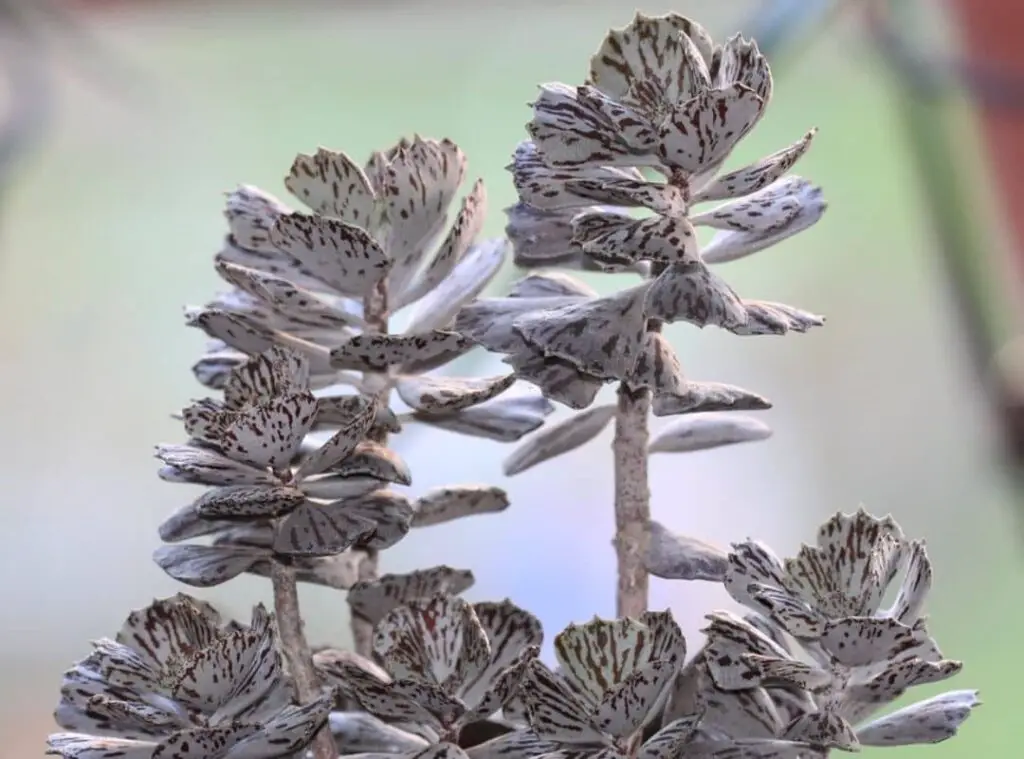
USDA Hardiness Zone
You may grow the Kalanchoe Rhombopilosa plants in USDA hardiness zones 10a-11b.
Watering Requirement
Kalanchoe Rhombopilosa plants would thrive with minimum watering since they are used to growing in hot and dry weather conditions.
Having said that, you need to change the watering frequency depending on the season. You could water them moderately in seasons like in Autumn, Spring.
On the other hand, you need to speed up watering during summer and water them thoroughly During winter, you may water them as essential. Particularly if you spot your plant is shriveling.
If you are unsure whether you need to water your Kalanchoe Rhombopilosa plants, best is to place your finger in the soil for about 1-2 inches and see whether it is dry or soggy.
If you feel like the soil is completely dried out, you need to immediately start watering them.
On the other hand, if you end up over watering the Kalanchoe Rhombopilosa plants, it could create fatal repercussions on them.
When you supply water in abundance, that will lead to the rotting and the decaying of the roots.
In addition to that, it will make the plants more prone towards fungus. When watering, avoid spilling water on their leaves. Instead, you need to water the soil directly.
Soil Requirement Type / pH
It is crucial that you grow them in a well-draining soil mix. As such, you may use a special cactus soil mix or a succulent mix. They are widely available in the stores.
Alternatively, you may also create a soil mix on your own by blending perlite and sand at 40 % and 50 % along with peat moss.
The purpose of adding the coarse sand perlite is to enhance the draining and the air circulation of the soil mix.
When you provide a well-draining soil mix, that will not retain any excess moisture in the soil. Consequently, it will avoid any potential root rot.
Flowering and Fragrance
You could expect these plants to flower in spring. Those flowers would be yellow in color. However, that would be somewhat rare to see.
They would consist of 4 small petals and 8 stamens as well.
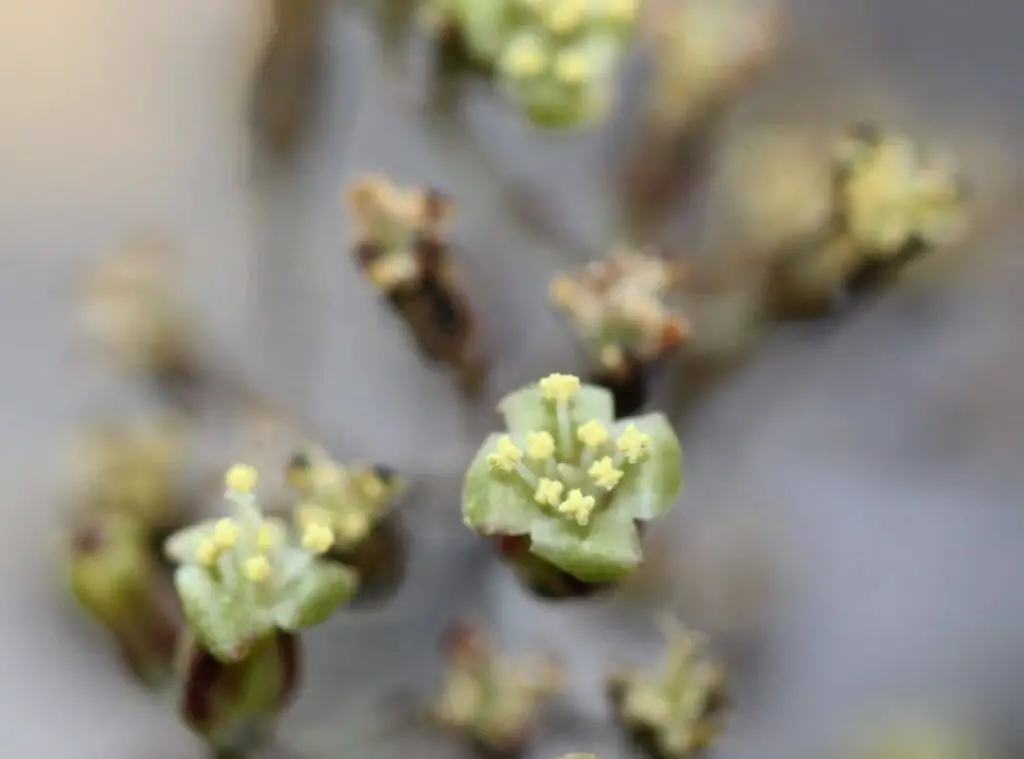
Pot size Potting and Repotting
Kalanchoe Rhombopilosa plants do not depend on frequent repotting. They can thrive in the same pot for a number of years.
When you repot them once every two years that will allow them to gain nutrients freshly.
Further you could consider repotting them when you spot your soil and the pot is not draining well.
Further if your plant is invaded by any pests or if the existing pot is too small, you could consider repotting them. Finally, you should repot them once you freshly buy them from the stores.
Is this plant indoor or outdoor?
You could grow Kalanchoe Rhombopilosa both indoors and outdoors. Having said that, you need to consider the temperature and the light requirements when growing them indoors or outdoors.
Best is to grow them in containers and locate them outdoors during summer. On the other hand, you could bring them indoors during the winter
Where to Plant
You could grow them on a terrace or on a balcony. That will add so much value to the entire space.
They will enjoy growing in sunny spots. When the weather conditions become much cooler, you could place them indoors.
In addition to that you may keep them in your gardens as well. However, ensure that you are not exposing them to intense sunlight.
Furthermore, they would be great picks for hanging baskets along with several other Kalanchoes of various colors. You only need to make sure that they can gain adequate sunlight.
Fertilizer and time of year
Usually, Kalanchoe Rhombopilosa plants would thrive well with the nutrients they receive from the potting medium. Having said that, you may also consider feeding them moderately.
You could consider feeding them during their active growing season. in terms of the frequency of feeding, you could either feed them once every fortnight or once every month.
You may use a cactus fertilizer, or a succulent fertilizer mix for this purpose. Just like with the other succulents, do not feed them when they go dormant.Further, do not ever over feed them too.
Other plants Pairs Well With
Kalanchoe Rhombopilosa plants would pair well with Kalanchoe succulents in general. Apart from that they could grow well with Aloes, Aeoniums, and Graptopetalum as well.
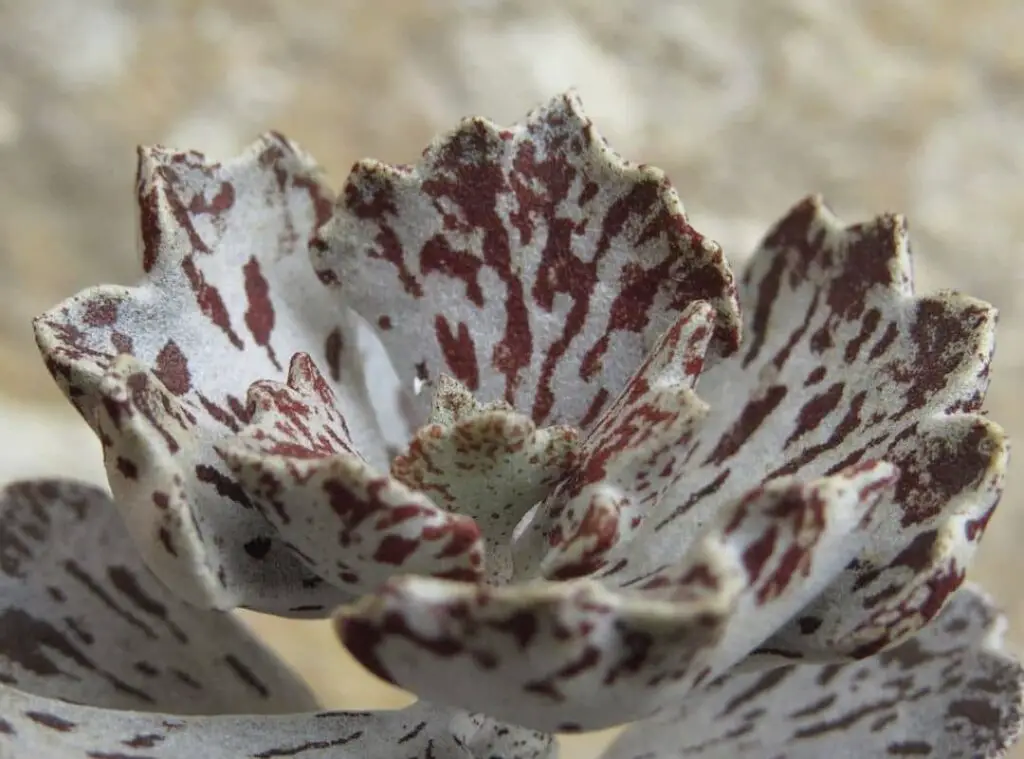
Can be toxic to pets
Kalanchoes in general are toxic plants for pets and for humans. As such you need to make sure that your toddlers cannot reach these plants and your furry pets are also protected from them too.
These plants contain a poisonous cardiac glycoside which could be toxic towards pets and for humans as well.
In case your pets or kids digest the parts of these plants, it could lead to severe allergy reactions.
There could be symptoms such as diarrhea, vomiting, change in the pulse rate, pains in the abdominal areas etc.
As such you need to be vigilant when you are growing them indoors and make sure that your kids or the pets cannot reach them.
Handling the plant
Kalanchoe Rhombopilosa is toxic and you should handle the plant very carefully. Wear gloves and eye goggles to protect your hand and eyes. Also wear long sleeves when you work with this plant.
Common bugs and illnesses
Kalanchoe Rhombopilosa plants can resist pests attacks as well as insect attacks. Having said that, they could still come across Mealybugs and aphids’ invasions.
However, you could still overcome them if you spot them in advance and act immediately too.
To treat them, you may use isopropyl alcohol or neem oil spray. When you are using the isopropyl alcohol, you could simply rub them with it so that the bugs cannot reach them.
On the other hand, if these bugs have attacked your Kalanchoe Rhombopilosa plants at a severe level, you could use an insecticide spray.
Apart from the bugs attacks, Kalanchoe Rhombopilosa plants would come across various problems due to over watering.
As aforesaid over watering would make your kalanchoe plants more vulnerable towards the fungus attacks.
In addition to that, it would cause the yellowing of the kalanchoe plant too. it could further result in rotting of the plant. When this takes place, chances are that you will end up losing your plant too.
Special Care tips
When it comes to special care tips, you do not really have to bother in pruning them since they do not grow big.
Having said that, you could consider pruning them to get rid of the spent blooms. In addition to that you could consider pruning them since you could remove the dead leaves.
That will consequently help to enhance more blooming and in vigorous growth in the plant as well.
All you have to do is to snip the spent bloom and the dead leaves whilst using a clean scissor. However, do not harm the plant when you prune them.
When you prune them, it will give a tidy and a neat look to the plant. Apart from that it would avoid any potential breeding places for bugs as well.
If you spot any leggy growth of the plant, it could be a result of low light level. In that circumstance you may shift them to a bright and sunny spot.
Before that ensure that you get rid of any unwanted growth of the plant though.
Further if you wish to make your Kalanchoe Rhombopilosa plants rebloom, you may keep the plant in a warm location. Avoid placing them near drafts.
Do not water them for about 6 weeks. Further expose them for 14 hours of darkness and 10 hours of sunlight.
You may do this for about 6 weeks prior to their blooming. Whenever you spot any flower buds forming, you may move the plants to a bright sunny spot.
Moreover, start watering them as usual. You may apply fertilizers during spring
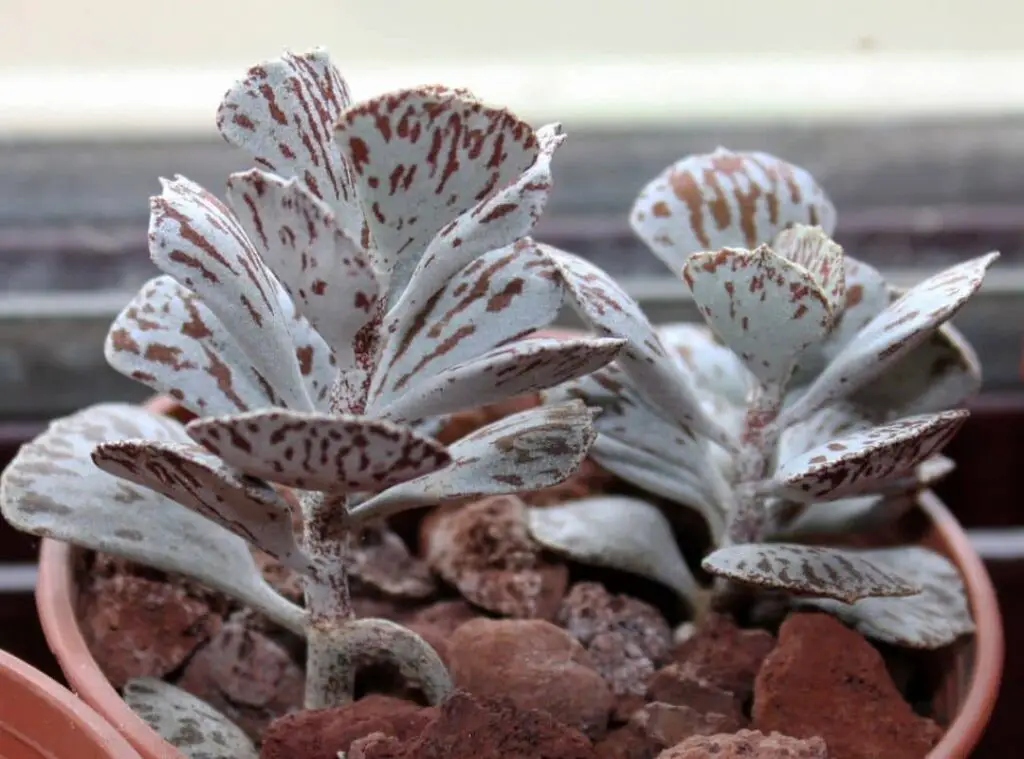
How to propagate Kalanchoe Rhombopilosa
You may use leaf cutting method and the stem cutting method to propagate the Kalanchoe Rhombopilosa plants.
To start off this, you simply have to obtain the cuttings whilst using sharp gardening shears.
Alternatively, you may use scissors as well. You only have to make a clear cutting of the part of the plant you wish to propagate. After that let those cuttings become callous for a couple of days.
After that you may plant them in a freshly arranged well-draining soil mix. Further make sure it is a pre moistened one too.
Once you plant them, make sure that you keep misting the plants five times per day. Further you should make sure that the soil is moist too.
Once you complete these steps, you may now place the specimens near a sunny window. However, you need to expose them for indirect sunlight only.
The exposure for intense sunlight could harm the specimen. It will take about 2-3 weeks to form roots. After that you could go ahead and transplant them in new containers.
Kalanchoe Rhombopilosa plant benefits
They would be great picks for containers and for pots as well.
Conclusion
So, before winding this article I hope it was useful for you to enhance your knowledge on how to grow Kalanchoe Rhombopilosa.
To sum up, you need to water them moderately, provide them adequate sunlight and grow them in a well-draining soil mix. As long as you provide these three necessities, they will thrive well.
Read Next : Kalanchoe Albino Succulent | 11 Amazing Care Tips For You |
Read Next : Kalanchoe Tomentosa Varieties | 7 Super Cute Plants With More Facts |
Read Next : 7 Super Cute Facts About Beautiful Kalanchoe Marnieriana Flowers
